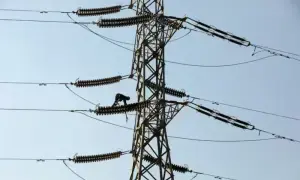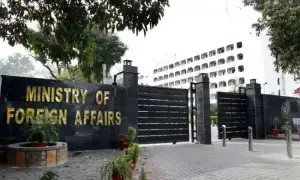LAHORE: The Water & Power Development Authority (Wapda) on Monday listed the Indus Bond — a green Eurobond (GEB) — on the London Stock Exchange (LSE) to raise $500 million to finance mega hydropower projects.
Talking to Dawn, Wapda Chairman retired Lt General Muzammil Hussain said: “Since we need about $2.2 billion ($1.5bn in first two years and the rest subsequently), we have initially a listed $500 million Eurobond. The number of bonds will be gradually increased depending upon the financial needs for the projects.”
He said the investors response on Monday was “excellent as some showed very keen interest in the bond we are launching very soon”.
Power utility seeking to initially raise $500 million
Wapda is the country’s first public sector entity that has launched the GEB to meet its financial needs for the construction of mega projects. The debt raised through the Indus Bond will be used for the construction of mega hydropower projects, including Diamer Basha and Mohmand dams in the next five years.
Talking to Dawn, Wapda Member Finance Naveed Asghar said the bonds are of seven-year or 10-year tenor. “A consortium of four international and local banks (Deutsche Bank, Standard Chartered, JP Morgan and Habib Bank) hired for arranging the investors’ calls for the launch of the bond by the end of this week,” he added. The consortium had also organised a virtual conference in which 50 global investors had participated.
In March last year, Wapda had succeeded in securing international credit rating of ‘B-’ with a stable outlook — a prerequisite for such bonds issuance — from Fitch and Standard & Poor’s (S&P).
According to an internal document, the authority had initiated the process to raise a portion of the requisite foreign currency financing from the international debt market through the issuance of GEB with a debut benchmark size of $500m. The authority engaged three major credit rating agencies — Fitch, S&P and Moody’s and JP Morgan — with the HBL providing financial advisory services for the process on pro-bono basis.
The rating agencies gave their ratings keeping in view Wapda’s autonomous status, business model, financial profile and its importance in realising the government’s goal of minimising dependence on imported fuel for energy generation, according to the Wapda document.
This was followed by a rigorous exercise from credit quality perspective, including evaluation of financial position, financial forecasts, impact of socio-political factors, and the authority’s corporate governance and regulatory framework to gauge strengths and potential risks. “The outcome of the credit ratings and issuance of bonds would bolster Wapda’s credibility with a direct bearing on the pricing when we raise foreign financing from other avenues like Syndicate loans and Export Credit Agencies,” the document said.
The authority is in need of $1.2bn during the first two years of the ongoing execution of the Diamer Basha and Mohmand dam projects.
A Fitch note says it has assigned Wapda’s proposed senior unsecured notes a rating of ‘B-’. “The proposed bond is direct, insubordinate, unrestricted and unsecured compulsions of the issuer and will have equal footing with its present and future insubordinate and unsecured obligations. The positive rating action on Wapda’s Issuer Default Rating would result in similar rating action on the proposed notes while the negative rating action on Wapda’s Issuer Default Rating would result in similar rating action on the proposed notes.”
“International scale credit ratings of sovereigns, public finance and infrastructure issuers have a best-case rating upgrade scenario (defined as the 99th percentile of rating transitions, measured in a positive direction) of three notches over a three-year rating horizon; and a worst-case rating downgrade scenario (defined as the 99th percentile of rating transitions, measured in a negative direction) of three notches over three years. As the Best- and worst-case scenario credit ratings are based on historical performance, the complete span of best- and worst-case scenario credit ratings for all rating categories ranges from ‘AAA’ to ‘D’,” Fitch said.
Published in Dawn, May 25th, 2021


































